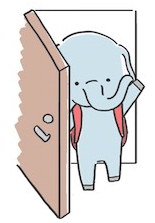アニメの影響が大きいかと思いますが、ここに書かれている単語は日本語を勉強していない人でもご存知なのではないでしょうか。
どうですか?知ってる単語はありましたか?
WOW = すげー(すごい)Suge~
Really? = ほんとうに(ほんまに)Hontouni?
What? = なに(なに〜)Nani~
Hello (Telephone) = もしもし Moshi Moshi
Good Morning = おはよう Ohayou
Danger, Great, Bad = やばい(やべ〜)Yabai
Thank you = ありがとう(ありがと〜)Arigato
Cute = かわいい Kawaii
Stupid, Idiot = ばかやろう Bakayaro
Hello = こんにちわ Konnichiwa
Thank you for the food = いただきます Itadakimasu
That was great = ごちそうさま Gochisousama
Japanese words that foreigners know well
There is a lot of influence from anime, but I think that even people who have not studied Japanese know the words written below. What do you think?
WOW = すげー(すごい)Suge~
Really? = ほんとうに(ほんまに)Hontouni?
What? = なに(なに〜)Nani~
Hello (Telephone) = もしもし Moshi Moshi
Good Morning = おはよう Ohayou
Danger, Great, Bad = やばい(やべ〜)Yabai
Thank you = ありがとう(ありがと〜)Arigato
Cute = かわいい Kawaii
Stupid, Idiot = ばかやろう Bakayaro
Hello = こんにちわ Konnichiwa
Thank you for the food = いただきます Itadakimasu
That was great = ごちそうさま Gochisousama

sign up for the Japanese-Online Newsletter
__..-・**・-..__..-・**・-.._ あいうえお かきくけこ さしすせそ たちつてと なにぬねの はひふへほ まみむめも やいゆえよ らりるれろ わゐうゑを ん __..-・**・-..__..-・**・-.._
Japanese-Online offers a complete Japanese video course
only $14/month!
Learn more at Japanese-Online.com
__..-・**・-..__..-・**・-.._ あいうえお かきくけこ さしすせそ たちつてと なにぬねの はひふへほ まみむめも やいゆえよ らりるれろ わゐうゑを ん __..-・**・-..__..-・**・-.._
#JapaneseOnline #LearningJapanese #FreeJapaneseLessons #JapaneseVideoLearning #JapaneseAnime #Anime #JapaneseFood #Bloguru










